Neemrana Baori: Delve Deep Into The Depths and Mysteries of Rajasthan
Once lost to the annals of history and steeped in culture, India’s stunning stepwells are on the brink of being brought back to life. And here I am on a quixotic pursuit to explore these magnificent marvels!
My quest to uncover the forgotten wonders of India’s architecture began with a single step – quite literally – when I beheld the beauty of the Rani ki Vav in Gujarat and Neemrana Baori in Rajasthan. Step-wells, unique to India and integral to its history and traditional water harvesting techniques, have seen use as early as 600 CE and reached their apex in the twentieth century, but have been largely overlooked in the technological advances of today. With an ever-growing curiosity, I sought out more and more of these splendid, architectural marvels and sociocultural sites – and I have yet to be disappointed in what I have found.
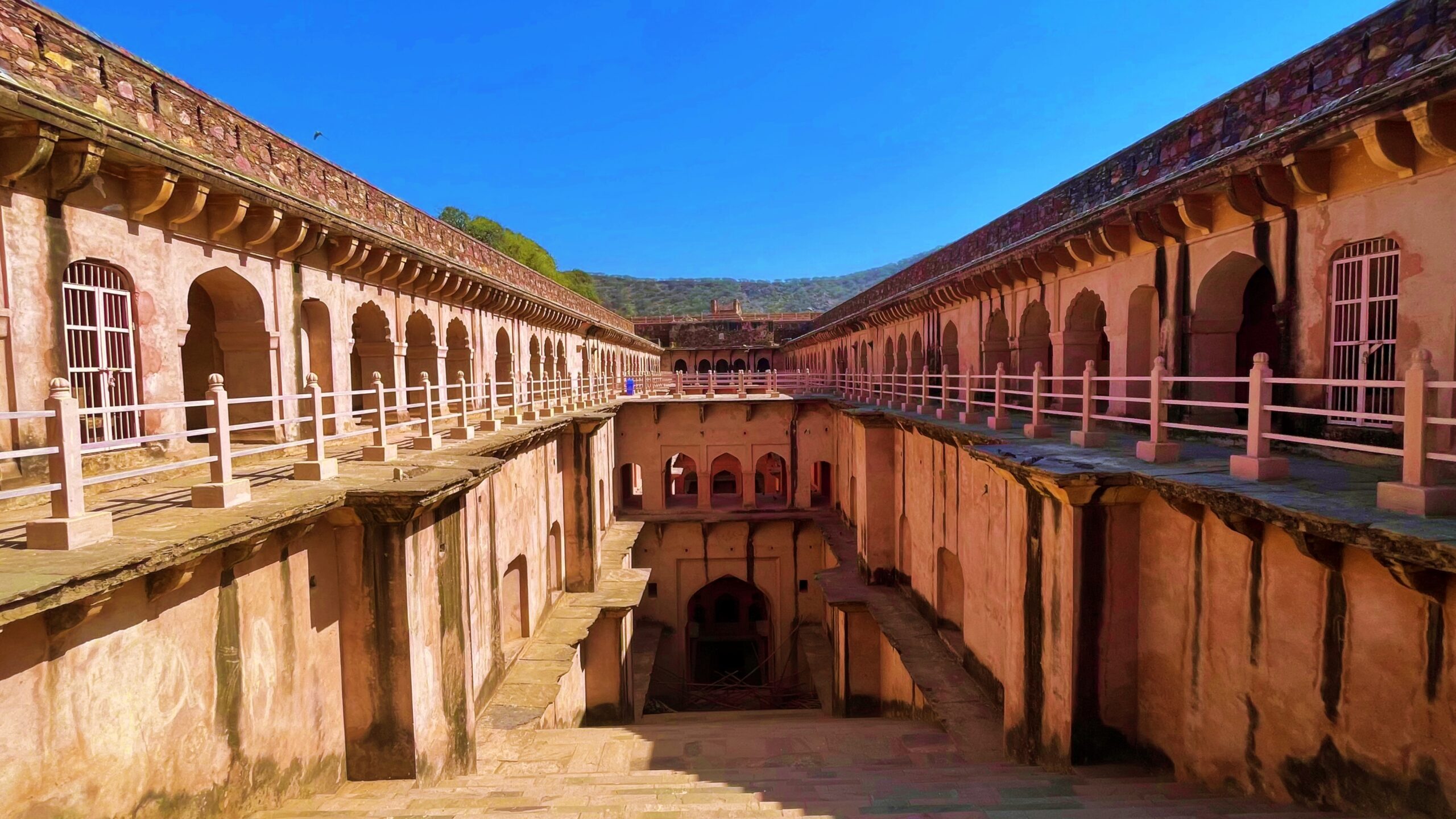
While books may have been written on the subject, only by exploring these step-wells can one truly appreciate and learn of their history. As a curious journalist, I have had the privilege of visiting hundreds of these majestic step-wells over the years, each with its unique location and fascinating legend. From their styles and functionalities to their sheer presence, which speaks to the historical transitions they have endured, these step-wells never cease to captivate. Whether they maintain their original aesthetic or have been blended with more modern designs, these architectural marvels continue to astound.
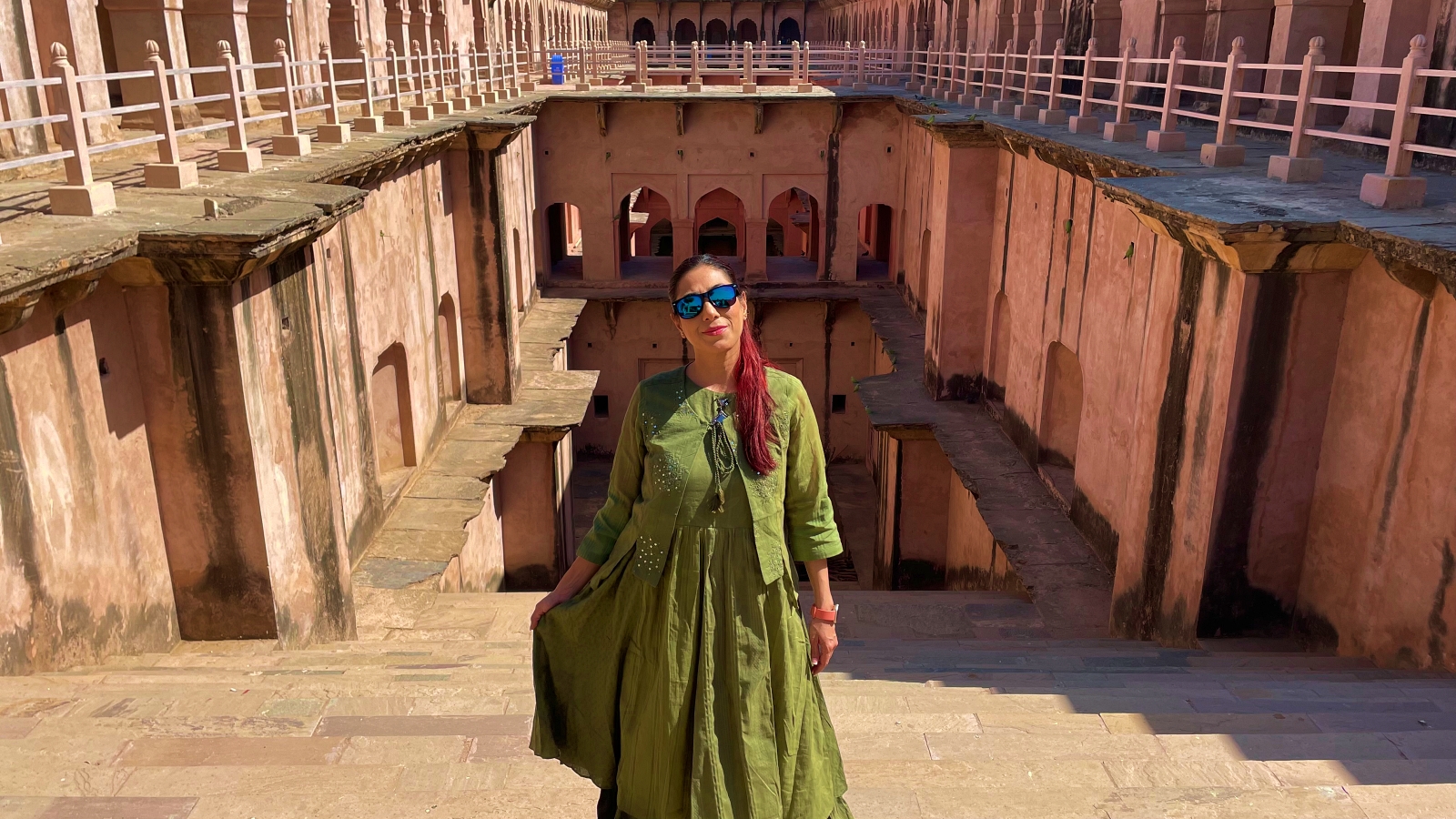
Two years ago, I was out for a drive outside Ahmedabad when I was told to look out for an ordinary wall in the distance. Little did I know what surprise awaited me! As I peered over the edge, I was blown away by the magnificence of the Adalaj Step-well or Rudabai Vav. Stairs and columns carved into the rocky walls led deep into the abyss, and I was hit with a wave of awe as I realised that this was something I had never seen before – usually, we look up at architecture, but this time I was looking down!
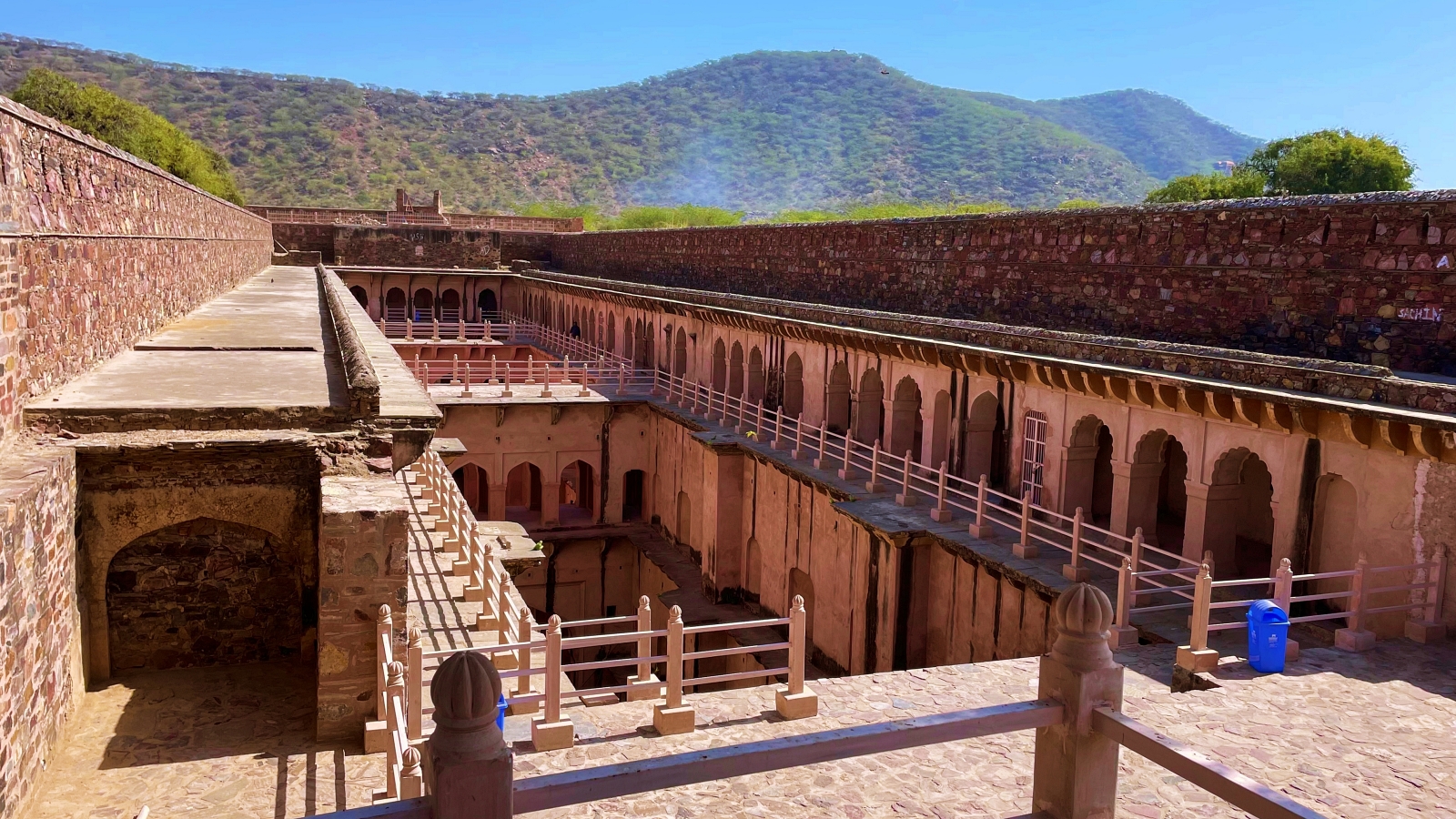
Thereon my travels around the country commenced, and I had an increasing curiosity about the ancient structures I encountered. A year ago, I finally decided to take a closer look at some of the step-wells in Gujarat and Rajasthan, yet I was still far from prepared for the grandeur of the 16th-century Baori I recently stumbled upon in the small village of Neemrana, located outside Delhi and hidden from the eyes of most tourists.
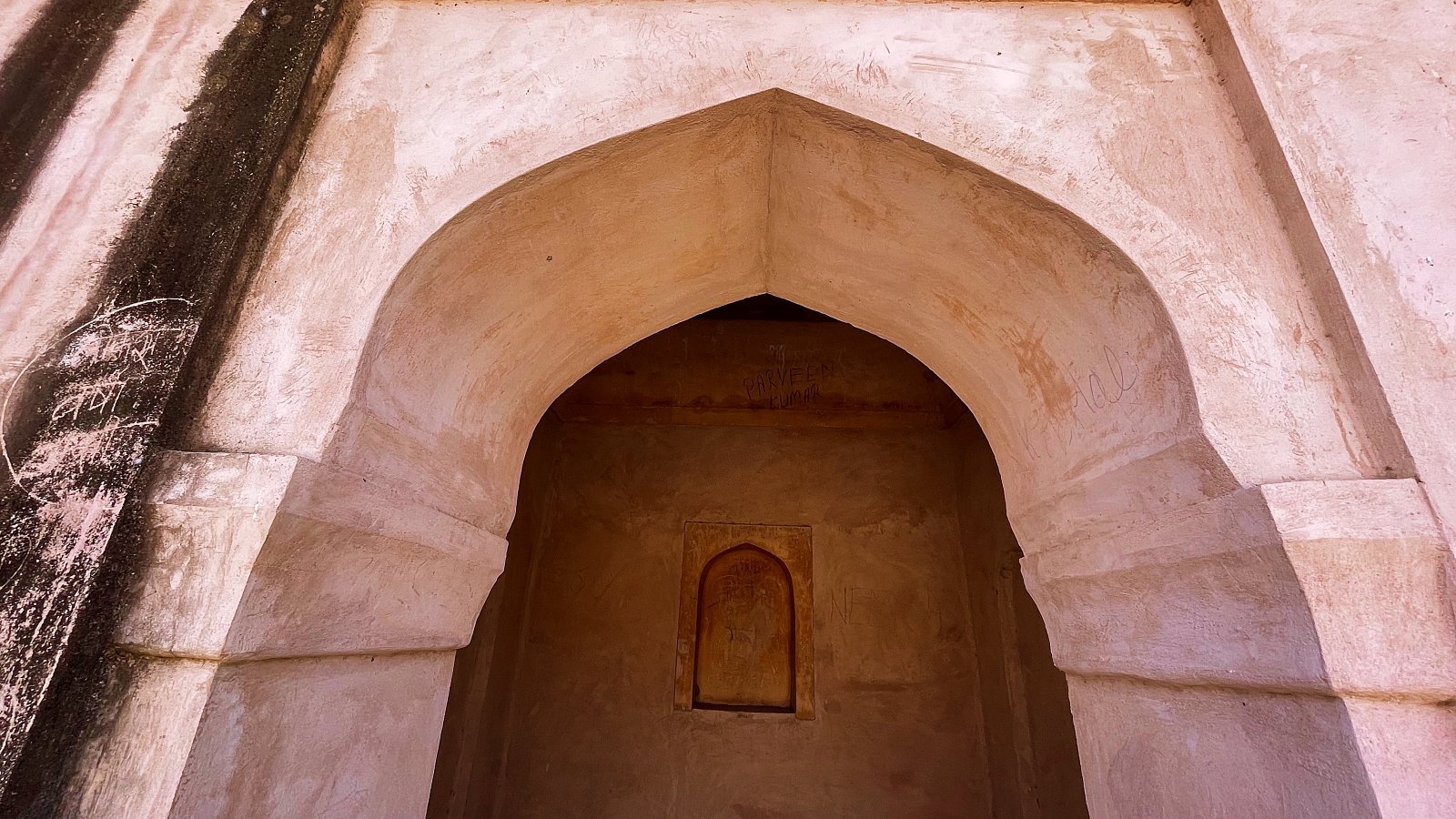
It was immense, incredibly deep, and full of mysteries – easily one of the most remarkable sights I’ve ever witnessed. Neemrana is renowned for its 15th-century fort, and this Baori in village is within spitting distance of the palace, and the very sight of it speaks to the grandeur that it must have once held. Now, if only we could travel back in time to witness the grandeur of the magnificent step well. Ah, what a sight it must have been! It is truly an architectural marvel, looking more like a fortress than a humble step well!
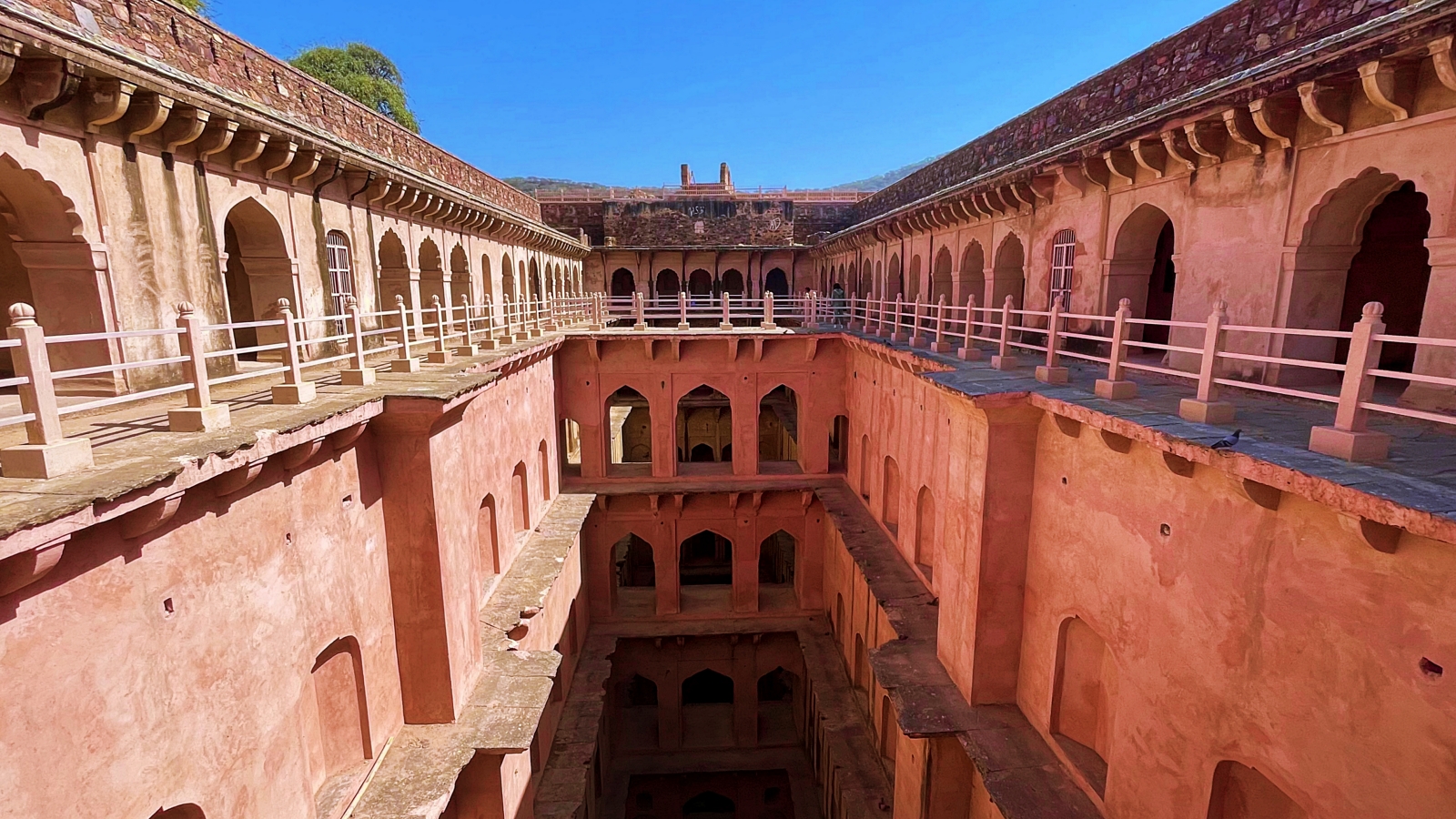
As I descended into the space, my senses were heightened to their peak. The intense sunlight transformed into a murky gloom, the air cooled and became thick with humidity, and the clamour of the aboveground world softened to a whisper. It was a surreal and disorienting experience, not knowing how far I had to go or how deep this edifice was. And then, when I finally arrived at the bottom, it truly felt like I had stepped into a whole new world. A 9-storey deep structure with arched architecture, there is nothing like it on Earth! So little is known about its true age that three separate dates exist in various sources ranging from the 15th century to 1720.
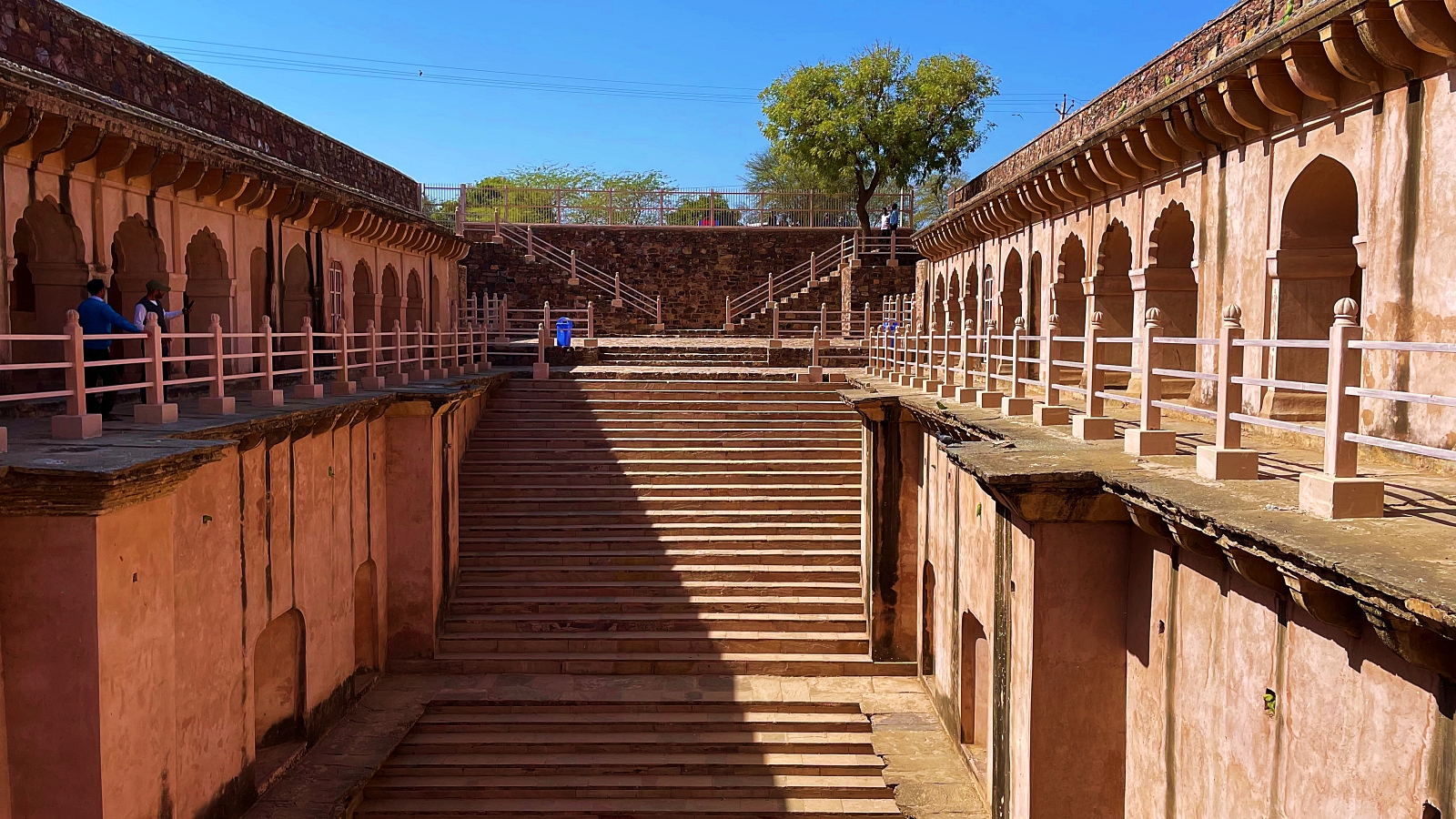
Legends tell of the ancient Baori, built well over 300 years ago by the noble Thakur Janak Singh, to provide a haven of rest and respite to weary travellers and traders journeying through the region. Though there is no record of its exact date of construction, many attribute its beginnings to the 1700s. Additionally, stories suggest it was built to provide relief during famines and droughts, a testament to its generous offerings of water and coolness. With the area having been under the rule of the illustrious Chauhan family, descendants of Prithviraj Chauhan himself, for most of its history, this Baori stands as a reminder of a bygone era and the grandeur of its rulers.
This mysterious step-well, also referred to as Rani Ki Baoli has been shrouded in mystery for centuries. The identity of the queen for whom it was supposedly named remains a mystery, and two of its nine floors, are submerged in water! To reach the lowest level of the well, one must proceed down a grand staircase of 170 steps, with more than twenty of them submerged in water. A total of 86 colonnaded openings adorn the ground level, inviting visitors to explore its depths! It’s almost hard to fathom the feat of engineering that was achieved centuries ago with this structure, which spanned nine floors of an incredible 20 feet each! However, due to centuries of neglect, the alluring beauty of this place was almost unrecognisable.
The lower floors are clogged with mud and silt, making it look like it had long been forgotten. But, what a stupendous feat it must have been when it was first built – completely underground! We can only speculate about what grand designs the original plan of this structure may have held, and how much of its historical past has been lost to time. What is certain, though, is that there are no carvings to be seen throughout its entirety – perhaps a testament to the fact that it was built after the flourishing architectural times of the past.
Descending the most ramshackle of ruins can be a downright spine-tingling experience, and the thought of tumbling down a seemingly bottomless well shaft is enough to give me the shivers. Those who can’t stand heights, darkness, creepy crawlies, would be in for a real treat. Though some step-wells are kept up by the government and local communities, most are littered with infuriatingly broken, grime-covered, or simply non-existent steps. Sometimes, I’ve had to get down and dirty to get the shot I want – literally.
But I can’t deny the feeling of accomplishment when I get the perfect photo of these enigmatic structures, and I’d kick myself if I didn’t take every opportunity to capture them! Thank goodness I’ve never broken a bone – I must be one lucky duck! More than just architectural wonders, these step-wells remain active, playing a plethora of roles – from collecting water for irrigation to serving as subterranean temples and places to cool off. Even when dried up, many of these marvels contain important shrines. Efforts to keep Neemrana Baori alive and thriving have been reignited under the rural tourism project – replete with plans to transform it into a bustling crafts bazaar.
Repairs and refurbishment are underway, to restore roofs, brackets, flooring, plastering, and installing metal gates and stone parapets. Only time will tell, whether the addition of a craft market add to the preservation of this cherished heritage, or irrevocably damage its historical significance. The ASI is striving hard to revive and protect the step-wells in Delhi and many NGOs are playing an indispensable role. However, what matters more than coming to the aid of a step-well is to connect it to the local community.
For a step-well to be sustained – be it in a city, town, or village – it needs to be cherished by its inhabitants just like it was done in the past. It is undoubtedly a herculean task, but one that can be accomplished. After all, without stirring up admiration for our ancient legacy, there is no chance of survival.
Table of Contents
Where to Stay:
Treehouse Sunrise Resort & Caravan Park, where you can enjoy the thrill of bonfire camping under a star-studded sky with your very own caravan! Or, if you prefer a bit more comfort, they’ve got you covered with their rooms with a private garden.
What Else to See:
Visit the regal Neemrana Fort Palace, an architectural wonder straight out of a storybook! Explore the stunning structures and bask in the grandeur of this amazing heritage hotel. For just Rs 2000 per person, not only will you get to enjoy the amazing views, but you’ll also be treated to a complimentary lunch!



